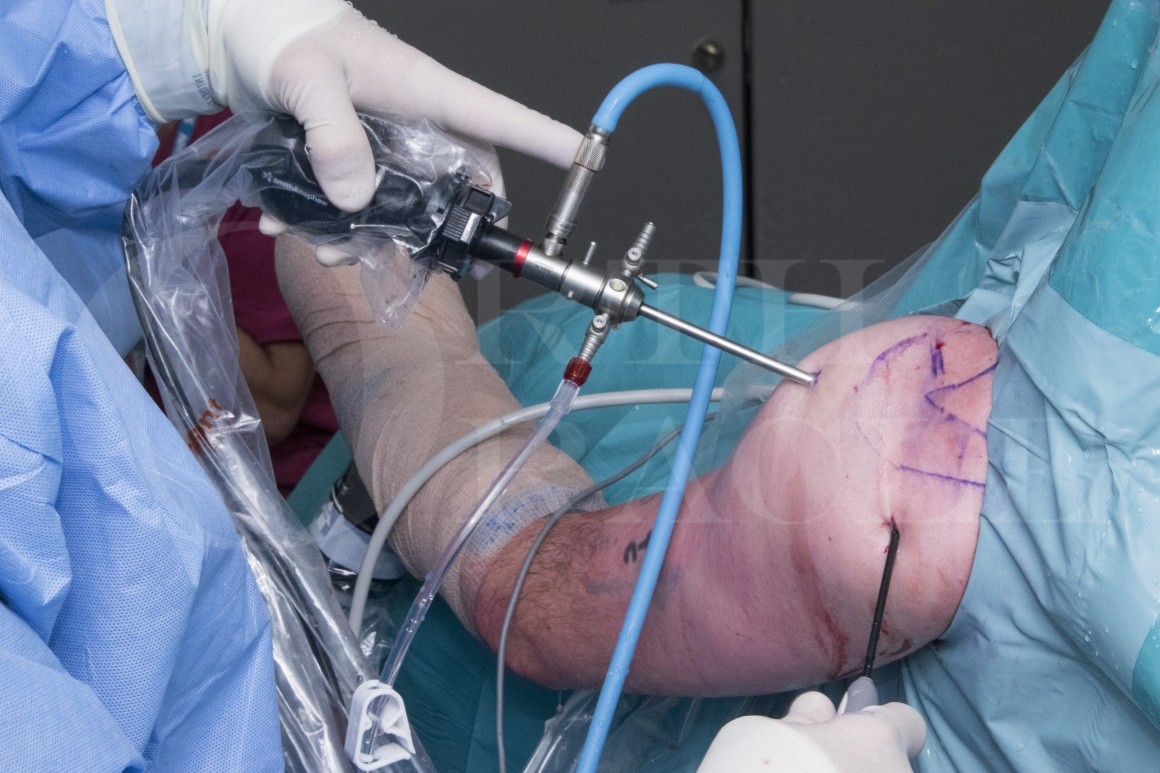Arthroscopic subacromial decompression
Overview

Subscribe to get full access to this operation and the extensive Shoulder & Elbow Surgery Atlas.
Learn the Arthroscopic subacromial decompression surgical technique with step by step instructions on OrthOracle. Our e-learning platform contains high resolution images and a certified CME of the Arthroscopic subacromial decompression surgical procedure.
Fractures of the humeral greater tuberosity are common. The vast majority are undisplaced avulsion type injuries from the greater tuberosity at the insertion of the rotator cuff tendons. Most often these occur as a result of a fall, usually with a direct blow to the shoulder. They can occur following simple falls from standing height or after higher energy injuries, often during sporting activity. When displacement of such a fracture occurs it is a radiological indication of a rotator cuff avulsion which should be treated surgically, with repair either using suture anchors or screws and suitable suture material. In the case of an undisplaced fracture, conservative treatment should be instigated with rest in a broad arm sling and weekly x-ray monitoring of the position of the fracture. Active forward elevation and abduction of the shoulder should be avoided for at least the first two weeks and then progressed as comfort allows, with graduated active assisted mobilisation commenced under the guidance of a physiotherapist.
Whilst the majority of patients will get a good result with the conservative management, some restriction in both movement and activity with associated pain from the subacromial space can result. Such subacromial pain often manifests as pain within the deltoid distribution towards the lateral aspect of the upper arm. Anything that obstructs the subacromial space may result in pain and “catching” symptoms, classically described as subacromial impingement signs. This can be further managed with conservative measures such as anti-inflammatory medication, steroid and local anaesthetic injection to the subacromial space and continued physiotherapy, including mobilisation exercises, stretches and strengthening. Persistence of such symptoms however are an indication for intervention with arthroscopic surgery to decompress the space so-called subacromial decompression.
Arthroscopic subacromial decompression is a common surgical procedure and has been well described over the last thirty years. As technology has advanced the techniques have been altered, adapted and improved, with the intention of optimising patient outcome. Most common indications for the operation are subacromial impingement syndrome with or without partial thickness rotator cuff tear and as a combined procedure with rotator cuff repair, excision of calcific deposits or excision of the acromioclavicular joint. In my practice all arthroscopic shoulder procedures start with an arthroscopic inspection of the glenohumeral joint itself. This then allows identification of any associated intra-articular pathologies, which can be easily addressed at the same time as the decompression. Within the subacromial space the decompression includes a thorough bursectomy, release and excision of the coracoacromial ligament and bony acromioplasty.
Author: Mark Crowther FRCS (Tr & Orth).
Institution: The Avon Orthopaedic centre, Bristol, UK.
Clinicians should seek clarification on whether any implant demonstrated is licensed for use in their own country.
In the USA contact: fda.gov
In the UK contact: gov.uk
In the EU contact: ema.europa.eu
Online learning is only available to subscribers.



















